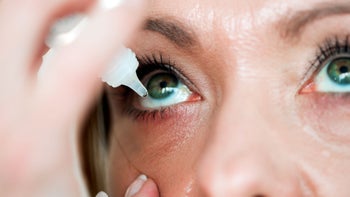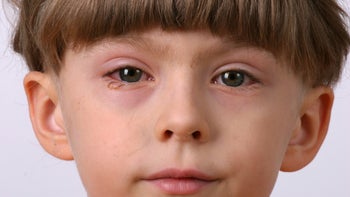
8 Surprising Health Benefits of Crying
Key takeaways:
Crying is a normal response to physical and emotional distress. And it offers several physical and mental health benefits.
Crying may help clear toxins and bacteria from eyes and improve vision. It can also help regulate your moods, improve your sleep, and help you communicate needs.
Moderate levels of crying are normal for most people. But crying that is too frequent or intense could indicate a problem.

When you are happy, sad, in pain, or just have something in your eye, it’s normal to tear up. Crying is a natural bodily response. And it even offers benefits to your physical and mental health.
Health benefits of crying
Crying benefits your overall health and well-being in expected and unexpected ways. Below, we outline eight health benefits of crying.
1. Cleaning your eyes
Perhaps the most important health benefit of crying is its ability to clean the eyes. Without tears, your eyes would be dry, dirty, and irritated. Your cornea would be at greater risk of damage, and your vision could be harmed.
Search and compare options
There are two types of tears that help maintain clean, healthy eyes:
Basal tears: provide a constant barrier between your eyes and the outside world to keep dirt out
Reflex tears: wash away irritants, like smoke, dust, and loose eyelashes
Crying is a way to flood the eyes with these protective tears. Though, keep in mind that you make tears all the time — not just when you cry. So whether you’re crying or not, tears provide this benefit.
2. Protecting against bacteria
Tears have the natural ability to fight bacteria in the eyes. When bacteria arrive in the eyes, tears work to neutralize or eliminate it.
It seems that the antibacterial quality of tears is due to certain enzymes, like lysozyme. Lysozyme works to destroy bacteria, which keeps your eyes and the rest of you safe and healthy.
3. Improving and maintaining your vision
Keeping your eyes moist is an essential part of having good vision. Dry eyes are linked to blurry and inconsistent vision, as well as increased sensitivity to light. The good news is tears, whether you’re crying or not, can help by moistening your eyes.
Read more like this
Explore these related articles, suggested for readers like you.
4. Relieving physical pain
Crying activates a number of events in your body that can help reduce your sensation of pain or physical distress. Because of this, people routinely report lower levels of pain after crying.
Here’s how researchers believe crying relieves physical pain:
Activating the parasympathetic nervous system (PNS): When the PNS is activated, it helps you feel calm and relaxed, which affects how you perceive physical pain.
Releasing hormones and chemicals, like oxytocin and natural opioids, in the body: These substances naturally help you feel reduced levels of pain.
Removing stress hormones, like cortisol, from the blood: With lower levels of these hormones, you can feel less pain.
5. Self-soothing and relieving emotional pain
With its effects on physical pain, it’s no surprise that crying can reduce emotional pain as well. During periods of intense emotional pain, crying is a self-soothing behavior that helps you feel better. The release of oxytocin and endorphins helps you feel calmer, more relaxed, and less stressed.
6. Communicating and connecting to others
Crying is an expressive act that helps you communicate your feelings to others. When you cry, you are sending a message to the people around you regarding your emotional experience.
Beginning in infancy, people cry to receive comfort and assistance from caregivers. Later on, crying can be a way to communicate feelings that are difficult to verbalize, in order to receive kindness, love, and support.
Crying is also a way to connect with others by showing that you can empathize with their experiences. Crying out of sadness or joy on someone’s behalf is a way to show you care. It helps to connect you to important people in your life.
7. Enhancing your mood
As mentioned, crying helps you feel better physically through the release of hormones and brain chemicals. It can also help your mood by shifting your thinking patterns.
After you cry, researchers believe that you are more likely to:
Experience stronger self-image and self-esteem: Engaging in a universal act, like crying, can help you feel normal, since you’re having a common reaction to an unwanted situation.
Develop a new outlook: When people finish crying, they often report a shift in the way they see a situation and increased acceptance. It’s impossible to say that crying causes this experience, but there does seem to be a relationship.
These responses can provide hope and optimism about the future, which can help improve your mood.
8. Reducing stress
Crying can reduce your overall levels of stress. When you cry because of heightened emotion, your tears likely contain higher levels of stress hormones. Because of this, some experts believe that crying allows people to offload excess stress hormones through tears. But many scientists are quick to point out that more research is needed to confirm this idea.
Is it bad to cry too much?
Crying with some regularity is generally not a problem. But if you find yourself crying too often or for too long, or if crying interferes with your daily routine, there could be an issue.
Crying too much could be a sign of a physical or mental health condition, like depression. If you are worried that you are crying too much, meet with a healthcare provider to have a conversation about your experiences.
The bottom line
Crying may seem like an uncomfortable or unwanted behavior. But, through a combination of physical and psychological effects, the act carries many benefits.
Small to moderate amounts of crying can help relieve pain, improve sleep, and clean your eyes of harmful substances. It can also help boost your mood, reduce stress, and help you communicate. However, crying that interferes with your daily life could be a problem.
Why trust our experts?



References
American Academy of Ophthalmology. (2016). Facts about tears.
American Academy of Ophthalmology. (2017). All about emotional tears.
Gračanin, A., et al. (2014). Is crying a self-soothing behavior?Frontiers in Psychology.
McDermott, A. M. (2013). Antimicrobial compounds in tears. Experimental Eye Research.
Vingerhoets, A. J. J. M., et al. (2016). The riddle of human emotional crying: A challenge for emotion researchers. Emotion Review.
Zickfeld, J. H., et al. (2021). Tears evoke the intention to offer social support: A systematic investigation of the interpersonal effects of emotional crying across 41 countries. Journal of Experimental Social Psychology.





























